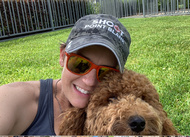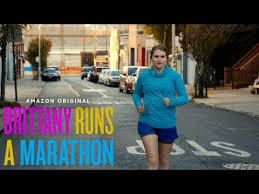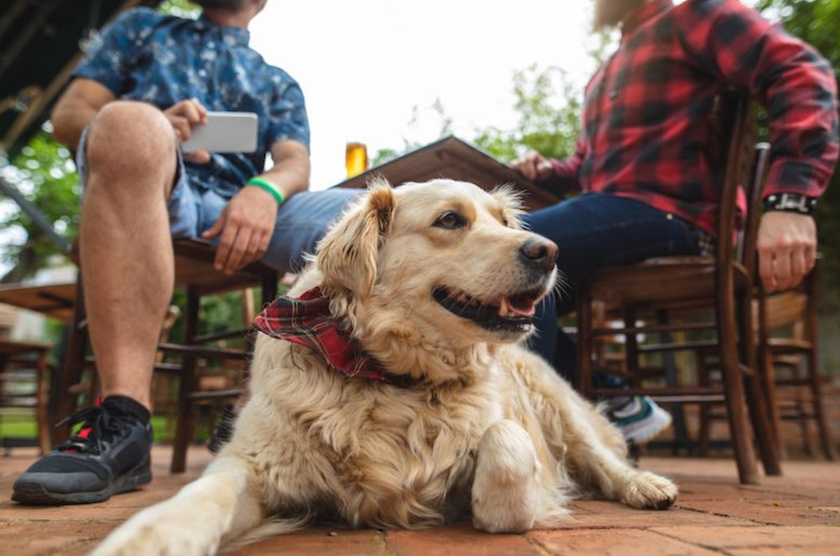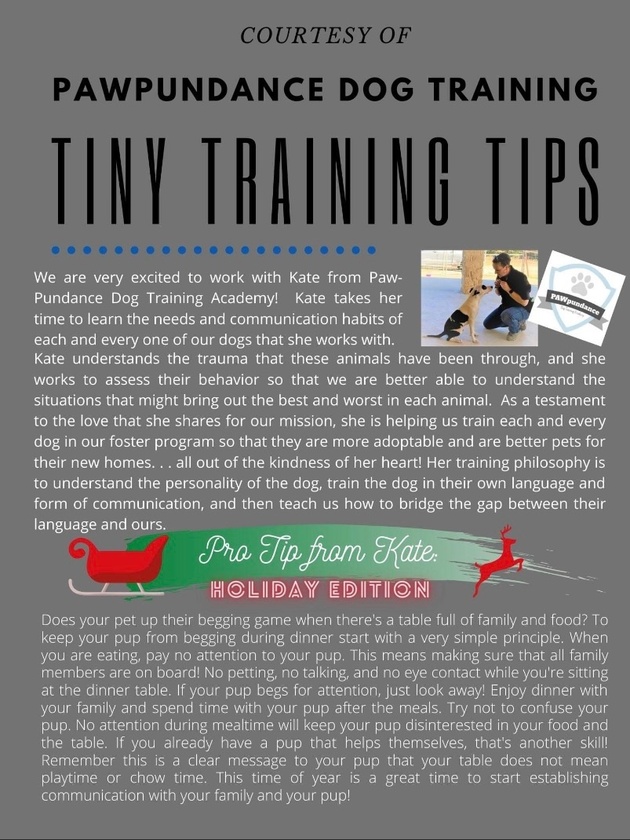
It’s ok! We’re here to help. We speak a little dog and can help translate for both of you. It’s probably just a miscommunication! And we are here to help get you both speaking the same language! Woof!
Connect with the PAWpundance training team and other members of the dog community to discuss better ways to communicate with your furry house guest.
**To get started USE code: TRIAL1month **
Brittany Runs a Marathon - Spoiler Alert (She runs a Marathon)
If you want a great movie to inspire you to set some goals and get after it this summer - watch this movie. However, it brings us to the question of goals vs systems. While the title of the movie leads of like it's a major goal, the movie is about developing system. In creating solid systems, Brittany experiences dynamic life changes. These changes are what makes this movie inspirational and the best part, it's based on a real person. She really ran the NYC Marathon and she really made major life changes base on systems.
What is goal and how is it different from a system?
The current expert in this is Scott Adams, creator of the Dilbert comic strip. He also wrote the best-selling book, "How to Fail At Almost Everything and Still Win Big [2013] ( https://amzn.to/3cVDlhL ) . A goal is something that we work towards like a weight loss or sales and inevitably fail to reach. Any misstep and we run off track and miss a goal. In the movie, this is clear the Brittany is focused on a weight-loss goal (specific number) and running the marathon on a specific date. She ends up pushing herself so hard that she becomes injured and has to miss the marathon. She learns while she's recovering that the goal was never the reason, it was the system she created to reach the goal that was so healthy... what?
Systems:
Let's break this down. In the beginning, a doctor's appointment inspired her to make a change. She started with simply going to a gym for a tour. Then she put on her sweats and went outside. Feeling overwhelmed, she immediately ran back in. But this is still a win! She did it. She overcame a fear of just going outside and doing something. A neighbor caught her feeling sad that she didn't do anything on her first run. But gave her the encouragement of "small goals". This is a good way of saying, "small wins". If you just show up, it's a win. That's all it takes. Begin with the smallest viable product and build from there. After this good advice, Brittany challenged herself to simply run one block. She got out there and accomplished that goal and felt very successful. Eventually she found a running group, through their support she was able to make it through two miles. Once she realized she was capable of that distance, her confidence grew and she was running alone much more with more enjoyment. She eventually was able to complete a 5k with her friends from her running group. Eventually the circle of friends began to train for the marathon and lifestyle choices began to take shape. But it all began with just putting on the sweats and going downstairs. Eventually she is able to run the marathon, move to a new apartment with a clean room (signs of a clean lifestyle), new job, romantic partner etc. But also she is continuing to run and continue those systems of a healthy lifestyle.
Health vs Body Image
We are also dealing with the a very tough issue in this movie. No matter our size, self-image is something most of us are forced to deal with and "Brittany Runs a Marathon" takes the matter head on. The first point they really dive into is about health. The doctor at the very beginning of the movie has to wrestle Brittany's question about "all body shapes are beautiful" vs making an objective health diagnosis. He focuses on her sleep health, her BMI and "healthy choices". When asked about healthy choices, Brittany remembers a specific past event. She uses alcohol and other substances for self-esteem. She uses abusive sexual situations for self esteem. When she's uncomfortable she uses a British accent and makes jokes. She uses humor to be liked but fears she's not like for genuine reasons. When the doctor furthers his point, her heart rate and blood pressure are out of range and there might be other consequences for someone her age. He's clear that he's making a diagnosis. All body shapes are beautiful. But she might not be healthy. Later in the movie we see her father, he's also overweight, joking in a British voice. Much later in the movie, we find that he died young implied for health reasons. We also learned Brittany was close to her father. They don't make a clear connection, but in the beginning when she's watching a video of her father - it seems like that might be a huge motivation to be healthy. The actress does a good job of making that subtle moment look very real and intimate.
Visualizations
There were lots of very good elements in this movie, not just the systems. They also showed Brittany utilizing visualizations. They never talked about it - but it was clear from the editing. When Brittany was in a situation where she was stuck and needed to overcome a milestone, she was visualizing different points of the marathon and herself running it. It's clear this is a visualization and not a flash forward because Brittany is alone on the street in the visualizations and in the crowds during live shots. When she is in a situation where she needs to draw confidence to overcome a fear, she visualizes opening the door and going outside to run the first time. The visualization gives her strength to stand up to situations that would've left her shy in the past. We don't know how she learned to use this amazing tool, but it's very cool that the director chose to use it.
Other Positive Notes
Friendships were also a huge part of this movie. They showed the roommate that turned out to be the shallow mean girl. Every time Brittany says something positive about herself or just moving forward in life, "mean-girl" has to respond in a selfish, negative way. When Brittany meet good friends, she's so used to the mean girl crowd, she takes their caring as pity. It takes a while, and a pep talk from her family, to learn what real friendship is, and it's not pity. She learns to let people in and to be there for others. They also describe "validation from unhealthy places". This runs rampant when a person need to find their self esteem externally. The best part about having systems, is having consistent small wins. Reinforcing your confidence daily with positive affirmations of accomplishments by writing a program of daily habits that are small and achievable will allow you to gain esteem from within. Basically - telling yourself you can do it, then you do. Everyday. It feels good. And it snowballs to bigger and more challenging wins. And it's earned. Not given.
And Social Media
The social media nod in the movie was also great. Brittany finds out how toxic and shallow social media can be. It's better to have organic, real friends than to try to have 25,000 followers and present a fake smile. She also gets that feeling that everyone is moving on with their life and she's stuck. But that's what happens when you judge life based on social media. People don't post their failures. If they do, they are ostracized. So we only get half the story. Everyone is struggling with something and social media is only telling half their story. So make friends in person.
But What does it all mean?
Lastly, the best line of the movie comes at Brittany's lowest moment like a well-written movie should! Her brother-in-law who practically raised her and cheered her through her whole transformation, then "caught her when she fell" - was her voice of reason. He tells her it was never about losing weight (goal), it was about taking responsibility for herself (system). As soon as she started to take ownership for small parts of her life, it compounded. And more and more parts of her life became positive and on track. When she made it a goal and focused on a single purpose, she lost track. So see what small changes you can make to take ownership. Then break it down to the smallest step. Just put your shoes on today. Tomorrow, shoes and sweats. Next day, get dressed and go outside. Easy steps. Easy wins. And after each win, let yourself feel good. It is a win. Make the steps meaningful enough to you to keep you motivated, but easy enough to keep you going. Read (or listen to the audiobook) by Scott Adams for GREAT advice. It all starts with just the first step... And a little coffee with Scott Adams.( https://scottadams.locals.com )

Welcome to PAWpundance Dog Training Academy on Locals.com!
We’re thrilled that you’ve joined our community! PAWpundance is a place for positive, dog-loving people to come together, share experiences, and help each other grow. Locals offers an “ad-free experience,” so even a small contribution helps support our tech and keeps our community thriving.
We want to see your furbabies!
We’re here to assist with any questions you may have about training, behavior, and more. At PAWpundance, we believe in blending knowledge with a bit of fun—expect plenty of paws, puns, and maybe even a dance or two! Together, let’s enjoy some laughs and build stronger relationships with our pups.
Our Philosophy:
We’ve invited another species to live in our homes, and our dogs are much more than accessories; they’re our guests. They don’t speak our language, and like in the movie E.T., we don’t want to be the intimidating figures trying to coerce a scared, confused being. Instead, we want to be like ...
Eye Contact, Eye Contact, Eye Contact!
Reward every glance. Start by reinforcing brief glances, then encourage your pup to hold your gaze a bit longer. Gradually phase out your part of the eye contact—your pup will learn to watch you and adapt to your movements naturally. This approach helps them learn to walk with you without relying on leash cues.
Remember, the leash is purely for safety—not for communication.
Take a look at this video with Meghan and Buckee. Buckee is watching Meghan closely, and she rewards him by making eye contact, smiling, and offering treats. Meghan also looks forward occasionally, teaching Buckee to walk with her in sync.
Notice that Buckee is a reactive pup, so the leash is essential for safety, especially if he responds to something unexpectedly. However, it’s only used for physical control when necessary. When Buckee refocuses, Meghan reestablishes instructional control, and they continue their walk together. She does a fantastic job of engaging with him! In ...
Loose-Leash Walking Tip:
Where you reward makes a big difference! Try using the hand on the same side as your dog when giving treats or praise.
When you reach across your body to reward with the opposite hand, it draws your dog’s nose in front of you, encouraging them to move ahead and potentially start pulling.
In the video of Meghan and Domino, Meghan holds the leash with her left hand while Domino walks on her right. She rewards him by petting and giving treats with her right hand. This keeps Domino walking by her side on a loose leash, rather than in front, pulling her along.
Next time you’re out walking with your pup, try rewarding with the hand on the same side as your dog.
https://twitter.com/wholedogjournal/status/1295508215740932098?s=21
How to teach you pup to be a good dining companion! What a great skill!

https://twitter.com/wholedogjournal/status/1292609106637987840?s=21
This is about counter-surfers, but I love the description of trying to shame dogs. This author, Pat Miller helped me understand this concept in her book the Power of Positive Dog Training.
If you’re still on Twitter, the Whole Dog Journal is a great group to follow. Lots of fantastic info!













